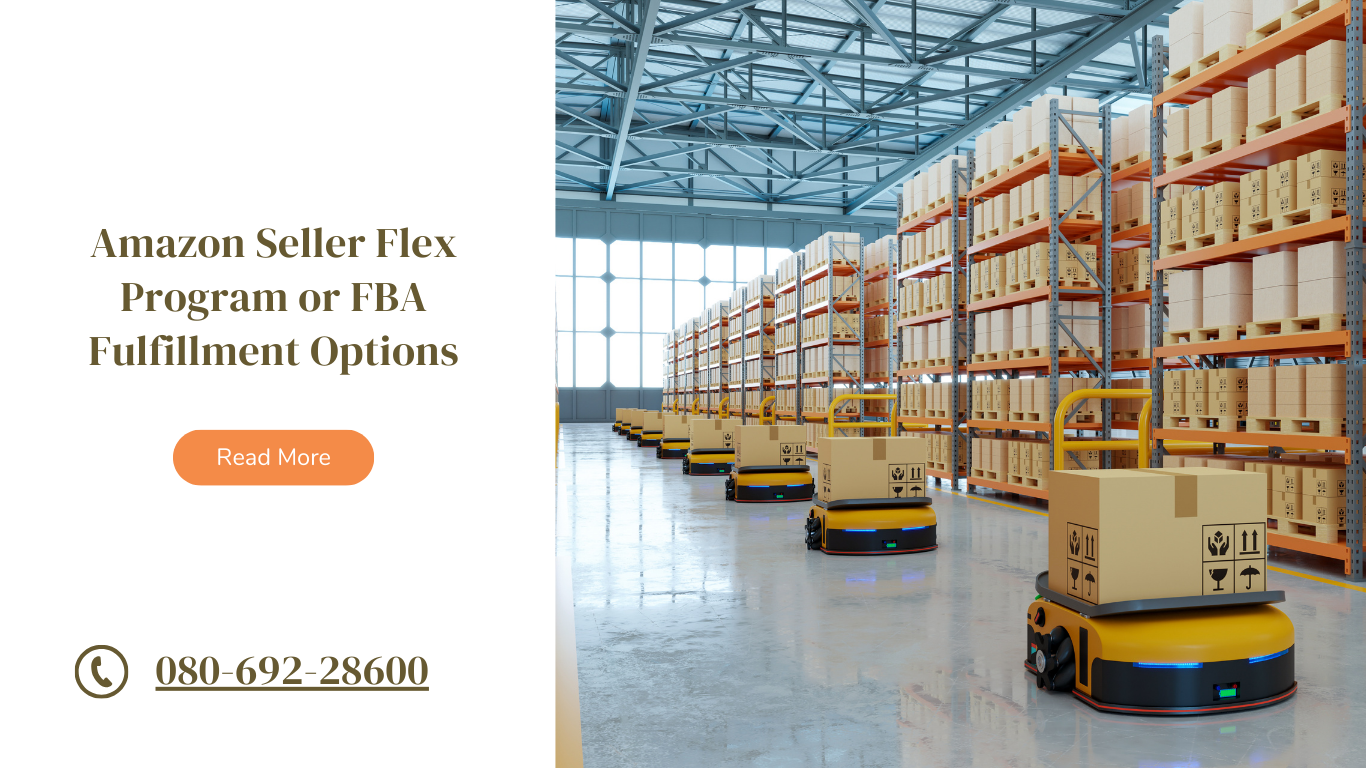Selecting the optimal fulfillment option when selling products on Amazon can have a profound effect on its success. Two popular choices are Amazon Seller Flex Program and Fulfilment by Amazon (FBA), both of which we will compare here in this comprehensive guide to determine which best aligns with your e-commerce goals.
Amazon’s Fulfillment Options
Before delving deeper, let’s gain a comprehensive understanding of both Amazon’s Seller Flex Program and Fulfillment by Amazon (FBA).
1. Amazon Seller Flex Program
Amazon’s Seller Flex Program allows third-party sellers to take control of the last mile delivery of orders placed with them.
How It Works: Sellers use their own resources – including vehicles and devices – to collect packages from Amazon fulfillment centers and deliver them directly to customers.
2. Fulfillment by Amazon (FBA)
This service offered by Amazon allows sellers to send their products for storage, packing and shipment directly from Amazon’s fulfillment centers to customers.
How it Works: Sellers ship their products directly to Amazon fulfillment centers, where Amazon handles everything else from order processing, packing and shipping to customer service.
Comparing Seller Flex and FBA
Let’s now examine the advantages and disadvantages of each fulfillment option to assist you in making an informed decision.
1. Greater Control over Delivers
Seller Flex allows you more freedom in terms of choosing delivery routes and schedules; you may even offer personalized experiences which could improve customer satisfaction and possibly save costs in the process.
2 Potential Cost Savings Immediately…
By employing your own delivery resources, you may reduce shipping costs and exert greater control over expenses. Pro: Effective route planning can minimize fuel expenses and vehicle wear-and-tear.
3. Eligibility for Prime Orders
- Seller Flex orders qualify for Amazon Prime, making them more accessible and attractive to Prime customers looking for fast delivery options.
- Accessing Prime listings can increase product visibility and sales potential.
4. Competitive Advantage
- Offering personalized and efficient delivery services can set your company apart from competitors.
- Positive delivery experiences can lead to higher customer satisfaction and repeat business.
5. Gain New Data Insights
By tapping into data and analytics related to your delivery operations, you gain access to key insights that enable informed decisions. Its Pro: Data-driven improvements can increase delivery efficiency and customer service levels.
The Advantages of Fulfilment by Amazon (FBA)
1. Time and Resource Efficiency
FBA can save time and resources by handling order processing, packing, shipping and customer service for you – leaving you more time and energy to focus on finding products to sell and expanding your business.
2. Amazon’s Trust Factor
FBA products tend to be seen by customers as more reliable due to Amazon’s reputation for fast and reliable shipping. And you benefit from Amazon’s world-class customer service and returns management capabilities.
3. Prime Eligibility
- FBA products qualify for Prime membership automatically, giving access to a wider customer base.
- Prime customers often prioritize FBA products due to faster shipping options.
4. International Expansion
Amazon Fulfillment By Amazon offers international fulfillment services, making global markets accessible without the complexity of international shipping.
The Cons of the Amazon Seller Flex Program
1. Eligibility Criteria
However, FBA may have eligibility requirements that make accessing those markets challenging.
- Not all sellers qualify for Seller Flex, as eligibility can depend on factors like location and other considerations.
- Meeting Amazon’s requirements – such as vehicle standards – may present difficulties for some sellers.
2. Operational Challenges
Delivering large orders can be complex and time-consuming; sellers need to invest in their own delivery infrastructure, including vehicles and devices.
3. Competition and Market Saturation
With more sellers joining Prime, competition for eligibility and customer attention increases. Saturated markets could result in price wars that reduce profits margins.
4. Potential Delivery Issues
Fulfilment by Amazon (FBA) sellers must manage delivery issues such as delays, lost packages and customer complaints themselves, managing customer expectations and resolving problems can be challenging tasks.
The Cons of Fulfillment by Amazon (FBA)
1 Higher Fees
FBA charges fees for storage, order fulfillment and other services which can eat into your profit margins. Con: Its cost structure may not suit all products or businesses.
2 Limited Control
- Your fulfillment process becomes less controlled, potentially leading to occasional errors and delays in fulfillment.
- Peak season restrictions could make accessing inventory difficult or restricted access may even prevent access.
3. Long-Term Storage Fees
If your products remain in Amazon fulfillment centers for an extended period, long-term storage fees may apply.
Amazon FBA for Beginners
Amazon Fulfilment by Amazon (FBA) offers beginners an ideal solution for starting an e-commerce business. Amazon handles order fulfilment so that you can focus on selling products while they handle storage, packing, shipping and customer service responsibilities for you. Amazon FBA provides beginners with an ideal entry into e-commerce with relatively low upfront costs and simplified logistics. By following the steps outlined here and continuously improving and refining your strategy, you can build a thriving Amazon FBA business over time. Remember, however, that perseverance and adaptability are keys to long-term success in e-commerce!
FAQs (Frequently Asked Questions) provide more details.
Q1: How can I determine my eligibility for Amazon’s Seller Flex program?
A1: Eligibility is determined by Amazon and can differ depending on your location. Please visit your Seller Central account or reach out to Amazon Seller Support to gain details of any eligibility considerations or potential programs that may apply.
Q2: Can I switch between Seller Flex and FBA depending on my business needs?
A2: While switching may be possible in certain circumstances, it’s essential that you understand eligibility requirements and potential restrictions prior to doing so.
Q3: Are There Any Hidden Fees Related to Seller Flex and FBA Fulfilment Solutions?
A3: Both fulfillment methods offer transparent fee structures; be sure to review them closely when creating your pricing strategy.
Conclusion
Selecting between Amazon’s Seller Flex Program and Fulfilment by Amazon (FBA) depends on your business’s unique needs and capabilities. Seller Flex provides greater control and potential cost savings while FBA provides efficiency with higher fees but limited control.
Consider your business size, product nature and ability to manage logistics when making this key decision. Some sellers even utilize both methods simultaneously in order to optimize fulfillment strategies – ultimately though, the best choice will depend on your individual e-commerce goals and resources.





